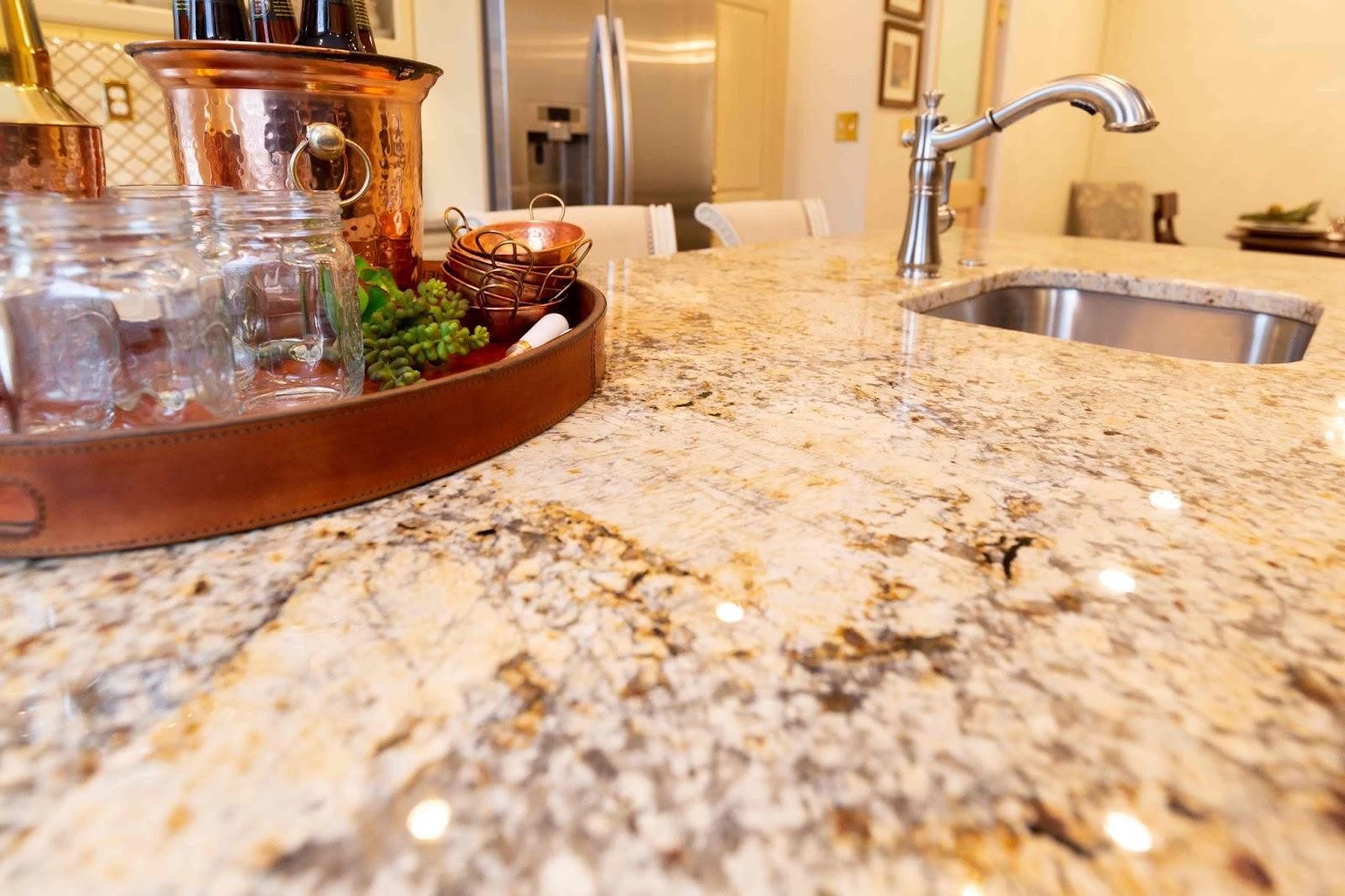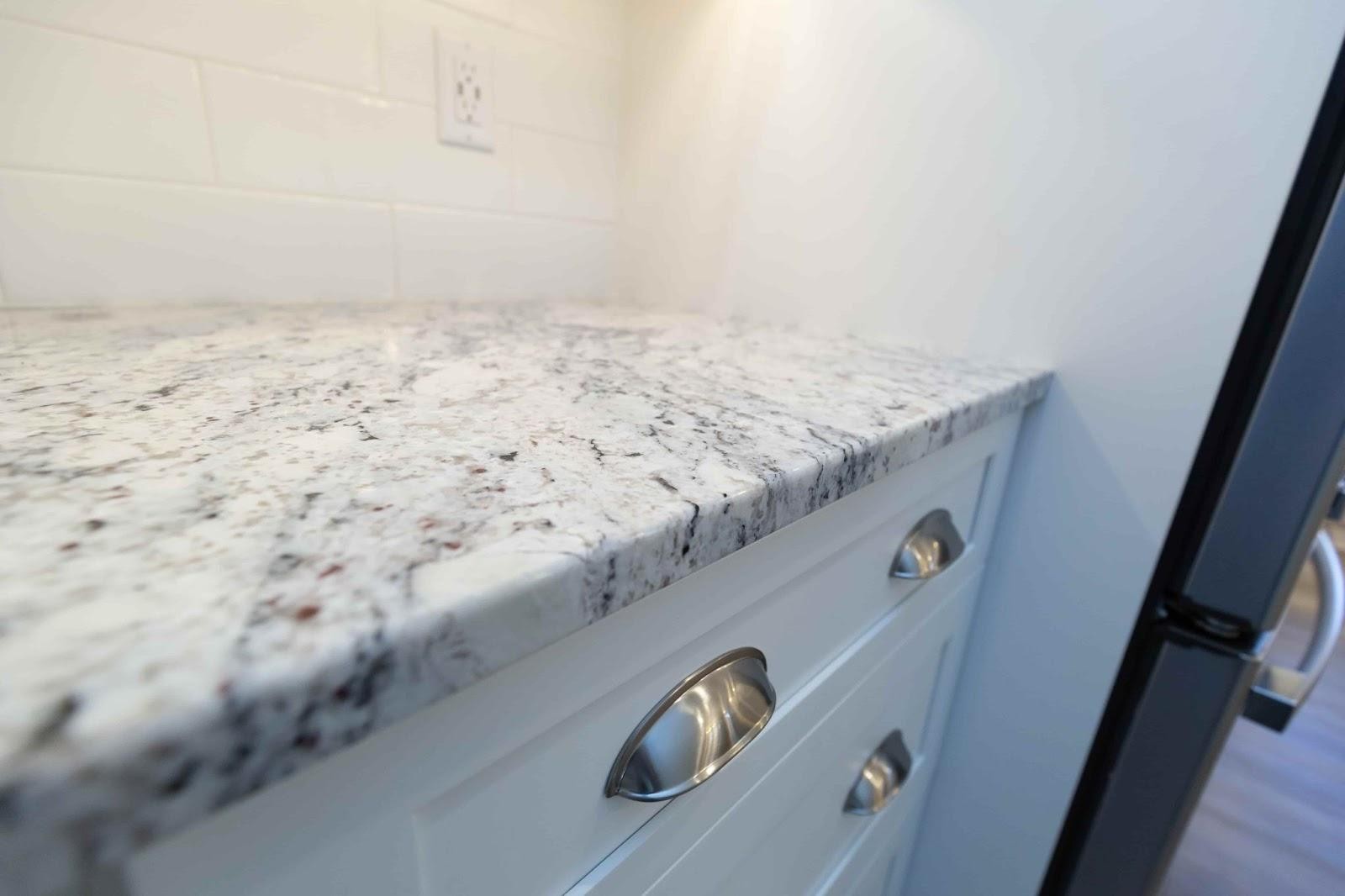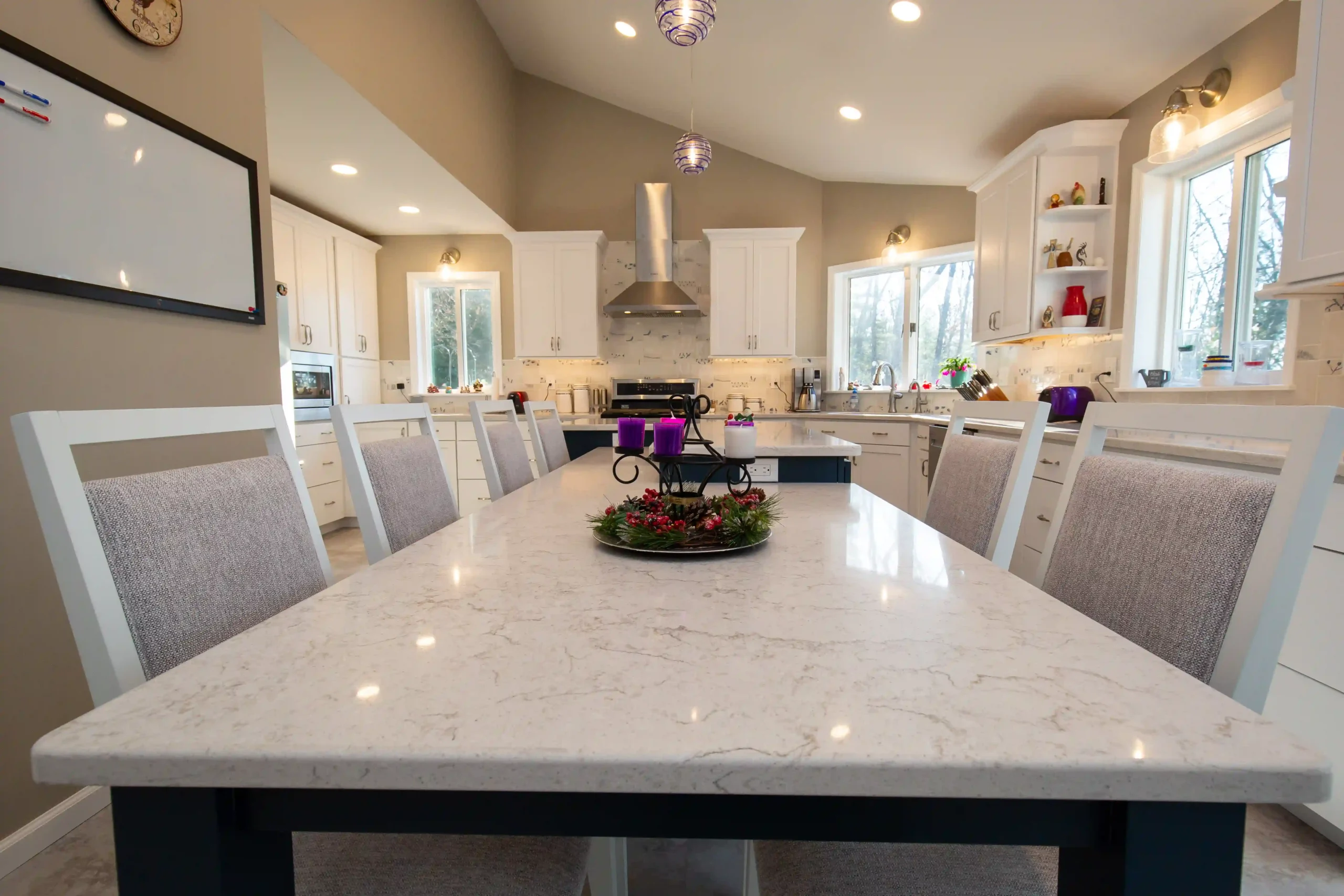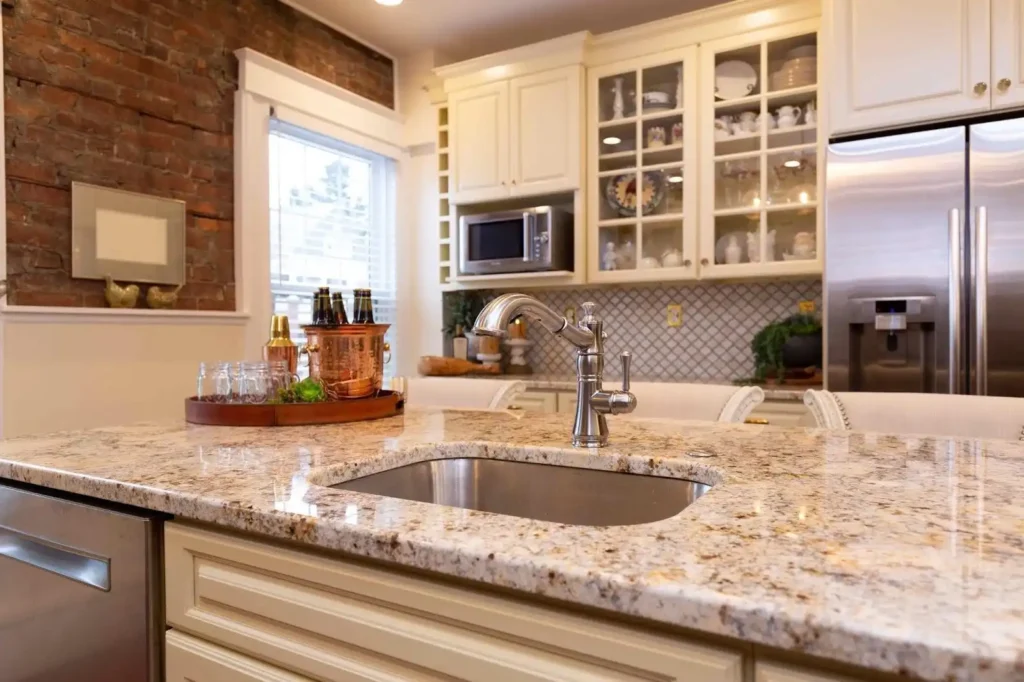If you’re considering granite countertops for your kitchen or bathroom, you’re in good company. Granite is a natural stone known for its durability, unique veining, and timeless beauty. However, with numerous slabs available, selecting the ideal granite slab requires an understanding of quality, finish, and long-term maintenance.
Homeowners often wonder how to make the right choice. This guide walks you through what matters most so your granite countertop fits your vision and lifestyle.
What Should You Know About Granite Before You Buy?

Granite is a natural stone with unique qualities that affect how it looks, performs, and lasts. Here are the key things every homeowner should understand before choosing a granite slab.
1. Granite Grades and Quality
Not all granite slabs are the same. Granite is available in different grades, which reflect rarity, appearance, and overall quality. Entry-level granite often comes in simpler patterns and more common colors, while higher-grade granite showcases rarer hues, unique veining, or thicker cuts. These premium slabs are sometimes considered works of art in the natural stone world.
The grade you choose will influence cost and availability, but it doesn’t always determine strength. Even entry-level granite offers the durability homeowners expect from this material.
If you’re looking for options at every budget, here’s how to get fantastic deals on granite or quartz countertops in New York City.
2. Durability and Function
Granite countertops are among the most durable natural stone surfaces you can put in a home. They’re naturally resistant to heat, scratches, and everyday wear. That said, granite is still porous, which means sealing is necessary to protect against stains.
Color also plays a role in function. Darker granite colors can hide marks and stains more easily, while lighter slabs may show wear or require more regular upkeep. Whether for a granite kitchen surface or a bathroom countertop, this stone combines long-lasting performance with natural beauty.
3. Maintenance Requirements
Granite is a natural stone, and like all porous materials, it needs to be sealed to resist stains. A properly sealed granite slab is easy to clean with nothing more than mild dish soap and warm water. This routine helps preserve the polish and finish, keeping the natural beauty of the stone intact.
The key is to avoid harsh cleaning products. Chemicals that promise quick results can wear down the surface. Gentle care keeps granite looking its best for years.
Compare your options with this guide on how to pick the right kitchen countertops: granite or quartz.
4. Color and Pattern Selection
One of granite’s biggest appeals is its variety. Granite is available in a wide range of colors, from classic black granite and soft gray to warm beige, tan, and even pearl granite. Beyond color, each slab reveals its own character: swirls, veins, and mineral flecks that turn a countertop into a one-of-a-kind work of art.
Because no two slabs are identical, viewing granite in person is important. Small samples rarely capture the full granite look. Seeing full slabs helps homeowners choose the perfect granite slab with confidence.
The Selection Process: From Slab Yard to Final Choice

Choosing the perfect granite slab is about more than picking a color. Here’s how homeowners can move confidently from browsing to a final decision.
See Granite in Person
Small samples are helpful, but they rarely show the scale of veining, swirls, or mineral flecks across a full slab. Visiting slab yards or a showroom near you lets you view granite in natural light and compare options side by side. Seeing granite in person helps homeowners understand exactly what will end up in their kitchen or bathroom.
Work with Experts
Granite selection is easier with professional guidance. Fabricators and kitchen designers can explain custom cut options, edge profiles, and how the stone will align with cabinets and layouts.
At Distinctive Surfaces, our team combines design insight with in-house fabrication and countertop installation, so the slab you select is the slab you actually see installed. That means no surprises, no delays, and a final choice that reflects both aesthetics and precision.
Need guidance on tying stone choices into your design? Here’s an Albany granite countertop design guide.
Understand Variations in Granite
Granite is a natural stone, which means every slab is unique—like a work of art. Pearl granite and other rarer varieties stand out for their colors and veining, but availability and cost can vary.
Knowing these differences helps homeowners choose the best granite for their budget and design goals. Granite is available in many grades and finishes, and understanding the variations upfront avoids second-guessing later.
Confirm Your Final Choice
Before placing an order, compare slabs side by side, check them under different lighting, and visualize how they’ll look against your cabinetry and floors. If possible, bring home a sample to see how the granite interacts with your space. This step ensures you’re choosing the perfect granite slab, not just for beauty, but for long-term satisfaction.
Ready to Choose the Perfect Granite Slab?

Granite countertops are an investment in both beauty and durability, and the right slab makes all the difference. If you’re ready to start choosing the perfect granite slab, visit our showroom near you to see full slabs in person.
At Distinctive Surfaces, we’ll help you browse with confidence, answer your questions, and guide you through every step of the selection and installation process. It’s home improvement made simple—and it starts with the right granite.
FAQs
What’s the best granite color for kitchen countertops?
There’s no single “best” color—it depends on your space and style. Granite is available in many different colors, from classic black to warm beige or pearl granite. Choosing a granite slab that complements your kitchen cabinets and lighting is the key to a timeless granite kitchen.
How do I know if a granite slab will match my cabinets and floors?
View granite slabs in person and compare them against samples of your cabinetry and flooring. Seeing full slabs under natural light helps homeowners feel confident that the colors and patterns will work together.
Is granite more durable than quartz or marble?
Granite countertops are extremely durable and resist heat and scratches better than many countertop materials. Quartz is less porous and requires less sealing, while marble is softer and more prone to etching. Each surface has strengths, but granite’s durability makes it one of the most popular choices for kitchen countertops.
What’s the difference between polished, matte, and honed finishes?
The finish affects both look and upkeep. Polished granite has a glossy surface that enhances color and veining. Matte or honed finishes create a softer, more natural look but may require more maintenance to prevent staining.
Why is it important to see granite slabs in person before ordering?
Every granite slab is unique. Samples only show a portion of the stone, while full slabs reveal the complete veining, swirls, and mineral patterns. Viewing granite in person ensures you’re choosing a granite that truly matches your vision before making a final decision.

